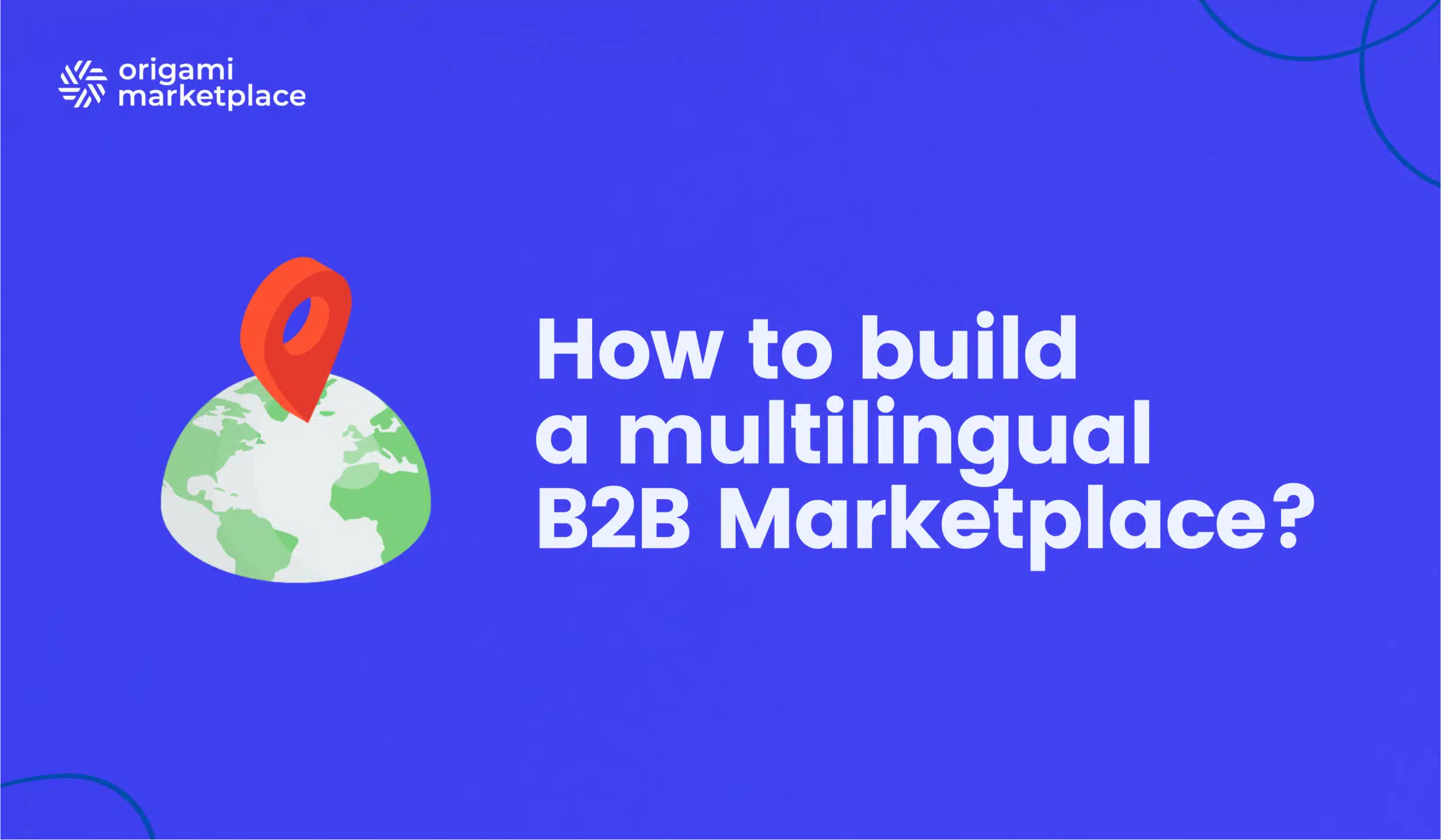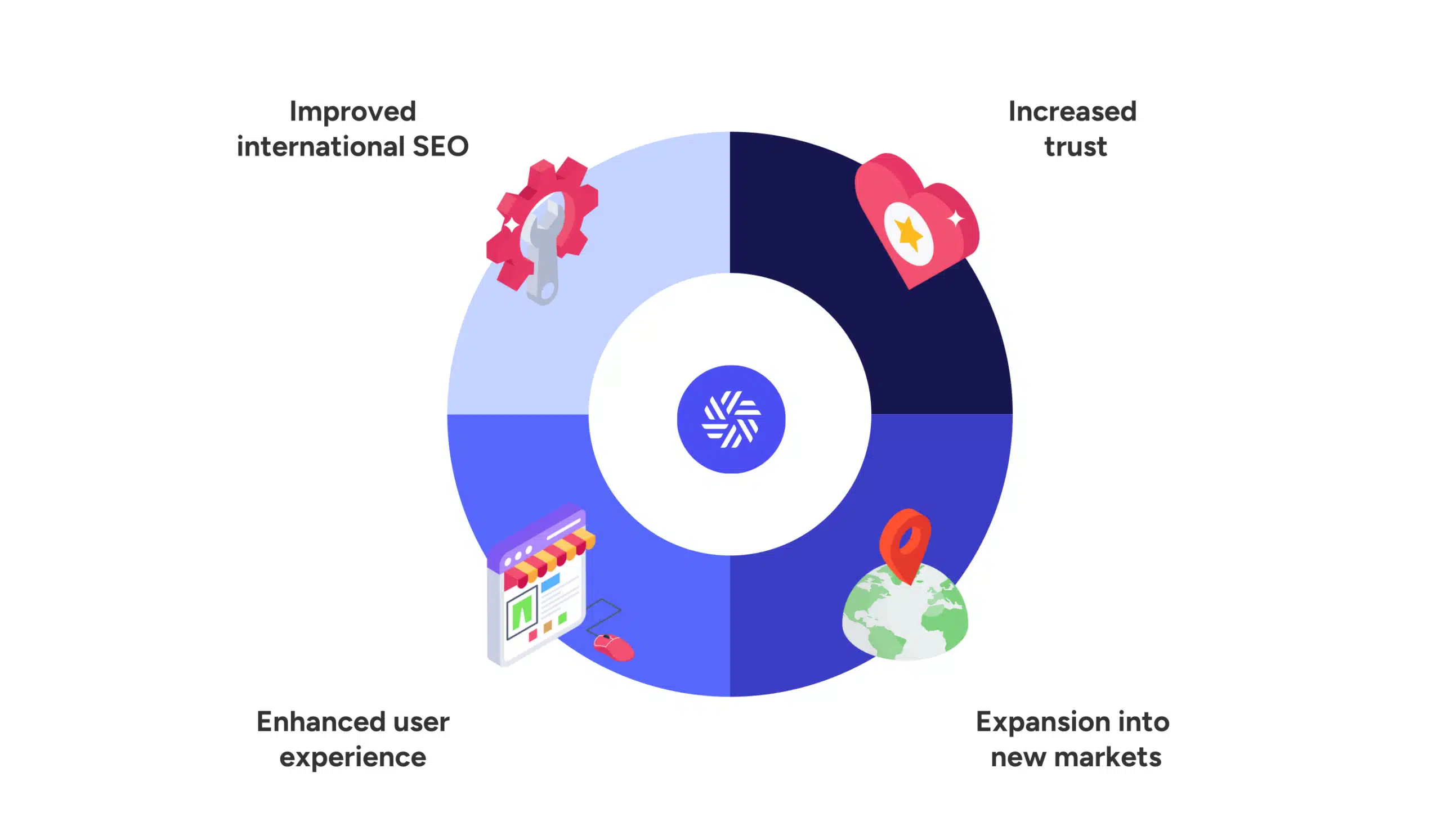How to build a multilingual B2B Marketplace?
- Arnaud
- 9 minutes reading

Building a multilingual B2B marketplace is essential for businesses looking to expand their reach beyond national borders. As business-to-business (B2B) commerce continues to grow on a global scale, offering a seamless and accessible shopping experience in multiple languages becomes a strategic advantage.
In this article, we will explore the benefits of a multilingual B2B marketplace and the best practices for effectively implementing multilingual capabilities.
👋 No time to read the entire article? Find the summary here.
1. Why is multilingual management crucial in a B2B marketplace?
In the B2B sector, buyers and sellers often operate on an international scale. Language barriers can quickly hinder communication, understanding of offers, and transactions. Here’s why a multilingual B2B marketplace is a key element in the B2B buying journey:
Expanding into new markets
Offering a user interface in multiple languages allows your marketplace to penetrate new markets more easily. Providing a platform in the native language of your potential buyers helps meet their needs more effectively and creates a stronger connection.Improved user experience
A buyer who can browse a multilingual B2B marketplace in their native language will have a smoother user experience. This reduces misunderstandings about product specifications or sales terms, leading to faster transactions and higher conversion rates.Building trust and credibility
A marketplace that supports multiple languages boosts its credibility in the eyes of international buyers. By addressing each market in its language, the marketplace demonstrates its commitment to understanding specific needs and meeting local expectations.Enhancing international SEO
Effective multilingual management helps optimize your international SEO by creating content tailored to each market. This improves your marketplace’s ranking on local search engines and drives more qualified traffic.

2. Challenges of multilingual management in a B2B marketplace
Despite its many advantages, managing a multilingual B2B marketplace comes with certain challenges. Anticipating these challenges is key to ensuring smooth and successful implementation:
Quality of translations
Ensuring accurate and relevant translations is critical for a good user experience. While automatic translation tools offer quick solutions, they can sometimes produce errors that may harm your marketplace’s credibility and user comprehension.Content synchronization
Maintaining content synchronization across multiple language versions of the marketplace can be challenging. Product updates, descriptions, and commercial terms need to be consistently aligned across all available languages.Cultural adaptation
Beyond translation, each market has cultural specifics that influence product perceptions. It is essential to adapt some content to reflect local preferences and expectations.Additional costs
Building a multilingual B2B marketplace can involve additional costs, such as integrating professional translation solutions, managing multilingual SEO, or customizing marketing campaigns for each market.
Download our free requirement specification template
Access essential functionalities to successfully build your C2C, B2C, or B2B marketplace. This simple-to-use backlog template will support you at every project stage.
3. How to effectively implement multilingual management in a B2B marketplace?
To successfully integrate multilingual management into a multilingual B2B marketplace, follow a structured approach centered on the user experience. Here are the key steps for effective implementation:
Choosing priority languages
Identify the most relevant languages based on your target markets. Analyze your existing customer base and potential markets for expansion. Prioritizing languages that have a direct impact on growth is crucial.Using professional translation solutions
While automated translation tools can serve as a baseline, using professional translators ensures critical content, such as product descriptions or sales terms, is accurately and smoothly translated. This guarantees consistency and high quality across all languages.Content localization
Localization goes beyond text translation to include adapting images, marketing messages, and cultural elements for each market. This may involve adjusting units of measurement, currencies, date formats, and payment methods.Implementing a language management system
Simplifying multilingual management on your marketplace can start with a front-end approach, such as using the Google Translate API for real-time translations. This allows users to navigate the platform in their preferred language without pre-configured back-office translations. As users access the marketplace, text elements are automatically translated, providing a dynamic, localized experience.While this reduces translation costs and delays, keep in mind that translations may not be as culturally nuanced as manual localization. This approach works best for standardized or non-critical text elements.
SEO optimization for each language
Each language version of your marketplace must be optimized for SEO, including creating unique meta tags, URLs, and descriptions to ensure visibility in local search engines.Multilingual customer support
Offering customer support in key languages helps build trust and effectively address the needs of international users. This can include support via email, live chat, or phone.Multi-currency management
Multilingual management often pairs with multi-currency support, especially in a multilingual B2B marketplace where international transactions are common. Offering prices and payment options in local currencies creates a seamless user experience and boosts conversions.Work with payment service providers (PSPs) that support major currencies and competitive conversion rates. Ensure real-time exchange rate updates and clear fee disclosure to avoid confusion.
“To succeed in creating an international B2B marketplace, adopt an integrated approach combining multilingual and multi-currency management. This involves more than translating texts or displaying prices; it requires adapting the user experience to each market. Invest in robust and flexible technologies and global payment solutions to ensure smooth content and transaction management. Adjust descriptions, visuals, and features (units of measure, date formats, etc.) to reflect local preferences, enhancing your connection with international clients and competitiveness in global markets.”

Alexandre Duquenoy
→ Connect with our B2B solutions expert.
4. Success stories: multilingual B2B marketplaces
Alibaba.com
As one of the largest B2B marketplaces in the world, Alibaba offers multiple languages for its international buyers and sellers, enabling millions of businesses to collaborate without language barriers.Made-in-China.com
This Chinese B2B platform provides a multilingual interface to attract buyers worldwide, expanding its market presence and positioning itself as a global player in manufacturing.Europages
Europages is a B2B marketplace dedicated to European businesses, offering a comprehensive multilingual experience, allowing users to navigate and interact in their preferred language, facilitating cross-border trade.
Managing a multilingual B2B marketplace goes beyond being a simple feature; it’s a strategic tool for international expansion and enhancing customer experience. Investing in high-quality multilingual solutions and adapting your marketplace to local specifics allows you to conquer new markets and strengthen customer loyalty.
To maximize efficiency, choose scalable solutions like Origami Marketplace, featuring advanced tools and essential professional features such as quote management and deferred payment. This enables you to offer a performant, accessible, and personalized marketplace for each target market. If you wish to discuss this topic or your professional needs, our team is at your disposal.
Key takeaways:
Importance of multilingual management: Essential for market expansion and improving user experience, while boosting trust, credibility, and international SEO.
Challenges to anticipate:
- Ensuring high-quality translations with professional solutions.
- Content synchronization and cultural adaptation for each market.
- Managing additional costs for translations and SEO.
Best practices for effective integration:
- Prioritizing languages based on target markets.
- Utilizing professional translation and content localization.
- Optimizing SEO for each language.
- Providing multilingual customer support and multi-currency management for a seamless experience.



